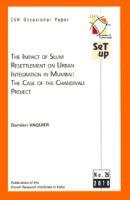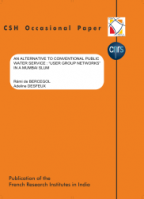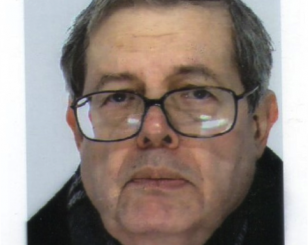Between Citizens and Institutions: The Dynamics of the Integration of Water Supply and Sanitation Services in Hyderabad

Abstract
Urban growth in Hyderabad has underscored the need for restructuring urban services, starting with public utilities. What changes are taking place in this sector? Who initiates and implements policies? What is their impact on the public? These questions are addressed in this detailed study of Hyderabad’s water supply and sanitation services. The paper focuses on institutional changes with regard to the main service providers – the Hyderabad Metro Water Supply and Sewerage Board and the Municipal Corporation of Hyderabad – and provides a critical analysis of restructuring and policies ostensibly aimed at providing uniform service throughout the metropolitan region. In order to evaluate how policies play out on the ground, two distinct areas of the city were selected for field surveys. In this way, the spatial dimension of urban service delivery – including deployment of physical infrastructure networks as well as social infrastructure – was examined in order to analyze the relative integration of a city and to determine the main factors of segregation. The findings dispel a number of conventional ideas about unequal service levels between the old and new parts of the city and between different income groups, and offer a more nuanced explanation for differential access using both social and spatial variables. The paper also addresses the demand side of the water supply and sanitation equation, analyzing the ways in which different categories of users try to improve access or service levels. The authors explore user expectations and the various means deployed to channel grievances, which reveal different modes of democratic interaction between the public and the authorities.
This study contributes to debates surrounding urban governance and decentralization in India’s cities. On one hand, it enhances understanding of recent developments in Hyderabad, a city on the forefront of many urban reforms in recent years. On the other hand, its analytical method – combining a macro study of institutional changes on the supply side with field surveys to analyze differential social and spatial access to service and household practices for improving service levels – offers numerous insights that are significant for studies of other metropolitan cities.
Table of Contents
PREFACE BY LORAINE KENNEDY & MARIE HÉLÈNE ZÉRAH
INTRODUCTION
I)POLITICAL WILL TO STANDARDIZE / MODERNIZE THE SERVICE
1.Medium and Long-term Objectives: Rationalizing the Service
a.Infrastructural Requirements
b.Outsourcing of Operations at the Consumers’ End
c.Integration of Municipal Services into a Single Entity for the Whole City
d.General Trends in Andhra Pradesh
2.Short-term Objectives: Reinventing the Relationship with Consumers
a.Customer Satisfaction
b.Improvement of Public Image
3.At What Level should the Service be Standardized?
a.Connecting Individual Lines to the Network
b.Sewerage Network
c. Storm Water Drainage
II) TESTING THIS POLICY AT THE LEVEL OF MUNICIPAL WARDS
1.Slight Difference in Service between the Two Sections
2.Old Urban Infrastructure and Economic Dynamism
3.The Special Case of Slums and Underprivileged Localities
4.Inadequate Correlation between Standard of Living and Level of Service
5.Is there Uniform Implementation of Directives from Above by Section 0ffices?
III) RESIDENTS RESORT TO SELF-HELP TO IMPROVE SERVICE
1.Individual Complaints: Differences in Response according to Locality
2.Representation: Need for Intermediaries
a.Neighbourhood Democracy
b.The Municipal Corporator: A Representative of the People and a Partner of the Administration?
3.Arrangements of Residents’ Associations: Joint Representation and Common Equipment
a.To Support and Relieve or Substitute Public Authorities?
b.Question of Social Redistribution
CONCLUSION
LIST OF ILLUSTRATIONS
BIBLIOGRAPHY
LIST OF ANNEXES
The CSH Occasional Papers can be downloaded for free on the CSH website
- In :CSH Occasional Paper Nº22
- Year :2008
- Pages :135
- ISSN :0972-3579









